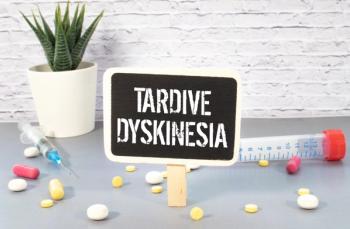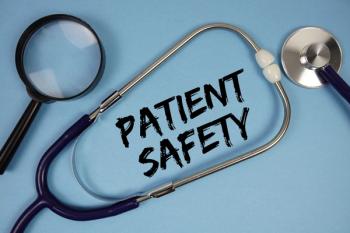Glucagon-like peptide-1 receptor agonists (GLP-1 RAs) such as semaglutide (Ozempic, Wegovy) and tirzepatide (Zepbound, Mounjaro) have transformed the approach to managing obesity and diabetes, resulting in significant weight loss and improved cardiovascular outcomes for patients. However, as with any rapid weight-loss strategy, including bariatric surgery and extreme low-calorie diets, the process may be accompanied by lean muscle loss, inadequate protein intake, and nutrient deficiencies.1,2
Pharmacists are in a key position to support patients by providing evidence-based nutrition information that enhances the effectiveness of therapy and reduces potential health risks. By reinforcing protein goals, addressing micronutrient deficiencies, and encouraging healthy dietary patterns, pharmacists can support better health outcomes during GLP-1 therapy.
The Role of Protein
Research findings have shown that weight loss from GLP-1 RAs may include loss of lean muscle mass.3 These concerns are not unique to GLP-1 RA therapy but are inherent to any rapid weight-loss intervention and warrant careful monitoring by health care professionals. Preserving muscle mass is critical to maintaining metabolic health and physical function.4 Evidence supports recommending protein intake of 1.2 to 2.0 g/kg/day to reduce muscle wasting.5 Despite this, only about 43% of patients meet their minimum protein needs during GLP-1 therapy.5
Pharmacists should reinforce protein targets and encourage patients to choose high-quality protein sources, such as lean meats, legumes, and dairy.6 Additionally, resistance training combined with adequate protein intake further aids muscle preservation.1,5,7 When comparing protein intake alone vs protein augmented with resistance training, significant improvements in muscle strength occurred only when resistance training was added.4
Micronutrient Deficiencies
GLP-1 therapy can reduce appetite and cause gastrointestinal adverse effects such as nausea and vomiting, which may contribute to poor nutrient intake.7,8 Prevalence data already show high rates of deficiency in populations with obesity and type 2 diabetes; for example, vitamin D (80%-90%), vitamin C (35%-45%), and selenium (58%) in obesity, and vitamin B12 (22%) in diabetes.9 Other common deficiencies include calcium, magnesium, iron, and fat-soluble vitamins (A, D, E, and K).7,9,10 Insufficiencies can occur before a true clinical deficiency and may not be detected by standard laboratory tests.
GLP-1 therapy may exacerbate already existing deficiencies in a patient when food intake is decreased. A 2025 multisociety advisory from leading nutrition and obesity organizations recommends that patients starting GLP-1 therapy receive a baseline nutrition and micronutrient assessment to identify deficiencies early on and guide individualized recommendations.1 Pharmacists should recognize these nutrient gaps as contributors to fatigue, reduced immune function, and poor glycemic control. Asking about dietary intake during counseling and recommending appropriate laboratory testing or supplements can help bridge these gaps. Pharmacists are well positioned to incorporate the evaluation of micronutrient deficiencies into their community practice.
The Mediterranean Diet
The Mediterranean diet, rich in whole grains, fruits, vegetables, nuts, legumes, olive oil, and fish, has proven cardiovascular benefits that complement GLP-1 therapy.9,11,12 Results from the landmark PREDIMED trial (ISRCTN35739639) showed a 30% relative risk reduction in major cardiovascular events in patients on a Mediterranean diet supplemented with extra-virgin olive oil or nuts.13 Results from other meta-analyses confirmed reductions in myocardial infarction, stroke, and risk of cardiovascular death in high-risk adults on the diet.11 For patients with type 2 diabetes, the Mediterranean diet can improve glycemic control and lower systolic blood pressure levels.9 Pharmacists can encourage this dietary pattern to support weight loss, cardiovascular health, and metabolic outcomes during GLP-1 use.
Conclusion
GLP-1 RAs are powerful tools for improving weight and cardiometabolic outcomes; however, without proper nutritional support, patients may face preventable muscle loss and nutrient deficiencies.1,3,5,7 Pharmacists can help bridge the gap between pharmacologic treatment and sustainable lifestyle change. By emphasizing adequate protein intake, monitoring for micronutrient deficiencies, and promoting evidence-based dietary patterns, pharmacists can help patients maximize the benefits of GLP-1 therapy while supporting their long-term health.9,12,13
About The Authors
Abigail Knapp, BSPS, is a fourth-year pharmacy student at Cedarville University in Ohio who is interested in ambulatory care and functional medicine.
Melody Hartzler, PharmD, BCACP, BC-ADM, ABAAHP, is a board-certified ambulatory care pharmacist and a highly recognized expert in integrative and functional pharmacy practice.
To read these stories and more, download the PDF of the Drug Topics September/October issue here.
Ready to impress your pharmacy colleagues with the latest drug information, industry trends, and patient care tips? Sign up today for our free Drug Topics newsletter.
REFERENCES
1. Mozaffarian D, Agarwal M, Aggarwal M, et al. Nutritional priorities to support GLP-1 therapy for obesity: a joint advisory from the American College of Lifestyle Medicine, the American Society for Nutrition, the Obesity Medicine Association, and The Obesity Society. Obesity (Silver Spring). 2025;33(8):1475-1503. doi:10.1002/oby.24336
2. Almandoz JP, Wadden TA, Tewksbury C, et al. Nutritional considerations with antiobesity medications. Obesity (Silver Spring). 2024;32(9):1613-1631. doi:10.1002/oby.24067
3. Neeland IJ, Linge J, Birkenfeld AL. Changes in lean body mass with glucagon-like peptide-1-based therapies and mitigation strategies. Diabetes Obes Metab. 2024;26(suppl 4):16-27. doi:10.1111/dom.15728
4. Tagawa R, Watanabe D, Ito K, et al. Synergistic effect of increased total protein intake and strength training on muscle strength: a dose-response meta-analysis of randomized controlled trials. Sports Med Open. 2022;8(1):110. doi:10.1186/s40798-022-00508-w
5. Johnson B, Milstead M, Thomas O, et al. Investigating nutrient intake during use of glucagon-like peptide-1 receptor agonist: a cross-sectional study. Front Nutr. 2025;25;12:1566498. doi:10.3389/fnut.2025.1566498
6. Watkins JD, Koumanov F, Gonzalez JT. Protein- and calcium-mediated GLP-1 secretion: a narrative review. Adv Nutr. 2021;12(6):2540-2552. doi:10.1093/advances/nmab078
7. Al-Najim W, Raposo A, BinMowyna MN, le Roux CW. Unintended consequences of obesity pharmacotherapy: a nutritional approach to ensuring better patient outcomes. Nutrients. 2025;17(11):1934. doi:10.3390/nu17111934
8. Christensen S, Robinson K, Thomas S, Williams DR. Dietary intake by patients taking GLP-1 and dual GIP/GLP-1 receptor agonists: a narrative review and discussion of research needs. Obes Pillars. 2024;11:100121. doi:10.1016/j.obpill.2024.100121
9. Via M. The malnutrition of obesity: micronutrient deficiencies that promote diabetes. ISRN Endocrinol. 2012;2012:103472. doi:10.5402/2012/103472
10. Zheng X, Zhang W, Wan X, et al. The effects of Mediterranean diet on cardiovascular risk factors, glycemic control and weight loss in patients with type 2 diabetes: a meta-analysis. BMC Nutr. 2024;10(1):59. doi:10.1186/s40795-024-00836-y
11. Sebastian SA, Padda I, Johal G. Long-term impact of Mediterranean diet on cardiovascular disease prevention: a systematic review and meta-analysis of randomized controlled trials. Curr Probl Cardiol. 2024;49(5):102509. doi:10.1016/j.cpcardiol.2024.102509
12. Tettamanzi F, Bagnardi V, Louca P, et al. A high-protein diet is more effective in improving insulin resistance and glycemic variability compared to a Mediterranean diet—a crossover controlled inpatient study. Nutrients. 2021;13(12):4380. doi:10.3390/nu13124380
13. Estruch R, Ros E, Salas-Salvadó J, et al; PREDIMED Study Investigators. Primary prevention of cardiovascular disease with a Mediterranean diet supplemented with extra-virgin olive oil or nuts. N Engl J Med. 2018;378(25):e34. doi:10.1056/NEJMoa1800389














































































































































